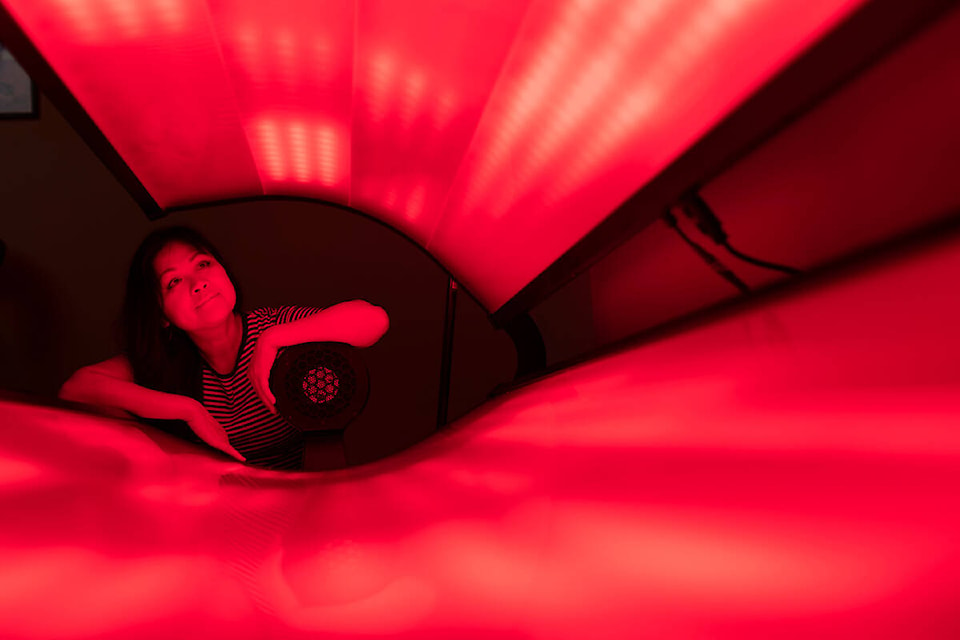Those suffering from chronic pain or other health complications know the rigmarole of searching for anything to get some relief.
Victoria’s Regen Clinic, which opened last August, offers another option – low-level laser therapy (LLLT). It’s a trending technology highlighted by celebrities and influencers alike – some of whom are using the same $300,000 machine that is at Regen.
LLLT, also known as cold laser therapy or photobiomodulation, is an FDA-approved form of treatment first developed in the 1960s that uses both red and near-infrared light on the surface of the body. It is touted to improve circulation, accelerate tissue repair, decrease oxidative stress on cells, and help relieve short-term pain in acute or chronic conditions, musculoskeletal conditions, diabetes and more.
Sasha Zhang, founder and managing director of Regen Clinic, discovered the technology while working as an entrepreneur providing therapeutic homecare medical devices.
 |
| Sasha Zhang, of RegenClinic. (Arnold Lim / Black Press Media) |
“I’ve always valued health as the most important thing in life. Natural or energy healing is part of my family as well as cultural heritage,” Zhang said.
Though she found her “forever home” in Victoria in 2008, Zhang was born in China and was greatly influenced by her grandfather, who was a kung fu master, energy healer and business mogul.
Her passion for health also has roots in her own story. Zhang almost died as a baby, until her mother nursed her to health with traditional Chinese medicine.
Regen incorporates traditional Chinese medicine with acupuncturists on staff who use laser therapy in their practice, in addition to just the regular laser therapy sessions.
“It’s the marriage of ancient Chinese healing arts and modern science. This is modern stuff.”
A study led by Massachusetts General Hospital found photobiomodulation (LLLT) increased the speed of tissue repair and reduce inflammation by encouraging cells to produce adenosine triphosphate – the source of energy at the cellular level.
The therapy is used by some doctors, dentists, skin specialists and pain clinics.
It should be noted there are skeptics. McGill University science communicator Jonathan Jarry mentioned in a January article that most studies surrounding photobiomodulation have been performed in mice, rats or ex vivo models, which “rarely lead to applications in humans.”
Small studies show improvements in those with dementia, skin damage, hair loss, osteoarthritis-related pain, and dental pain, but Jarry noted out more research is needed.
“I remain skeptical,” although Jarry did not review the literature on each application of photobiomodulation.
Zhang, however, is confident in its application, with success stories on hand of successfully alleviating symptoms for people with Parkinson’s, depression, arthritis, injury and more.
“I always encourage people to do their research,” said Zhang. “Our website is very rich in content with testimonials, expert opinions and research papers. They should read our reviews from clients.”
She finds the work rewarding and meaningful and sees it both as a tool of rejuvenation as well as an option for relief for people who are not getting enough help through traditional health care.
“I believe in well-being so much, and unfortunately a lot of people don’t have access to adequate health care.”
ALSO READ: B.C. doctor develops national guide for the greening of health care



